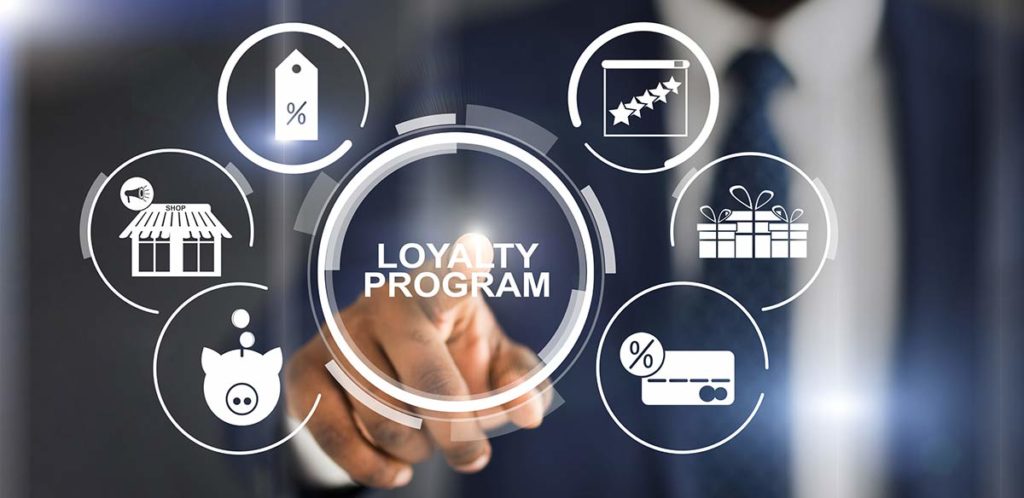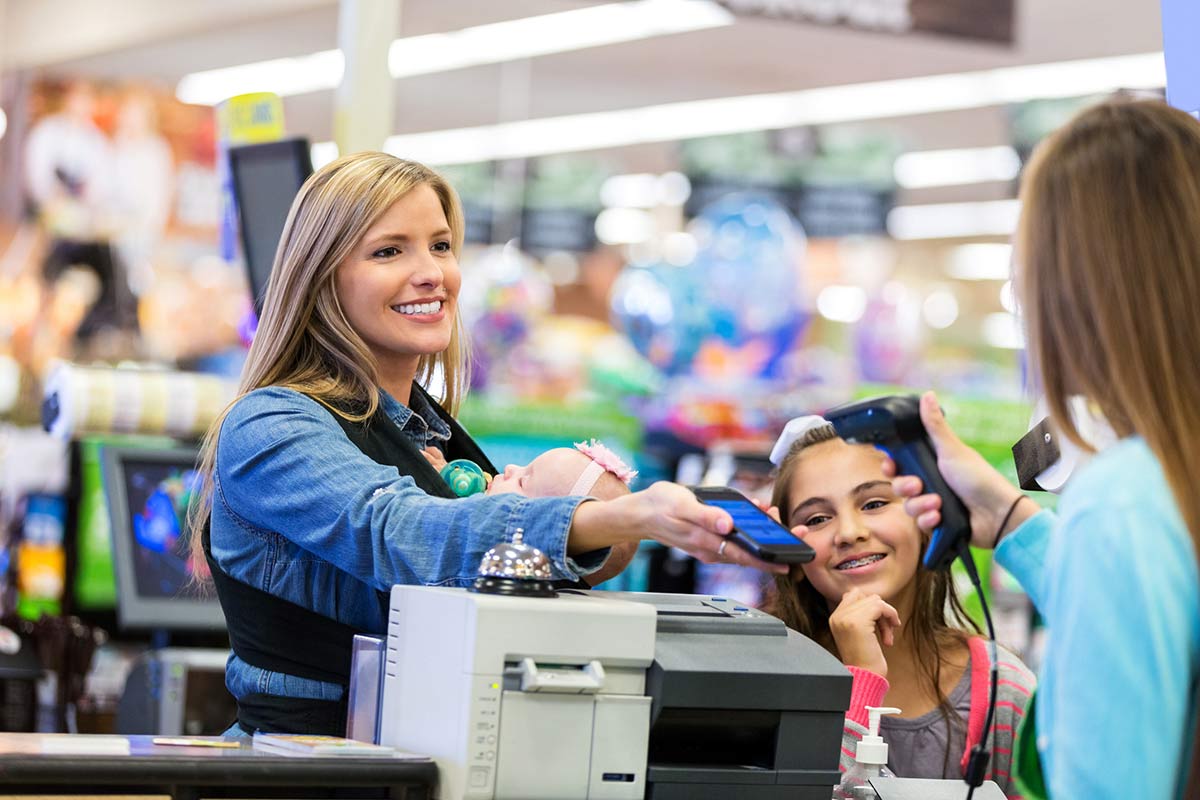Retail Loyalty: Trends & Challenges You Need to Know in 2023
Take a quick look at how many loyalty apps you have on your phone. Five? Seven? Ten? They’re no doubt eating into your storage space and buzzing away with discounts and vouchers you need to redeem now.
It’s no secret that loyalty schemes are everywhere. In fact, according to Accenture, 90% of companies now have some sort of retail loyalty programme in place. And for good reason: repeat customers typically account for 65% of a brand’s revenue.
But in a sea of rewards schemes, loyalty fatigue is a growing concern. It’s never been more important to understand your customers’ needs and know how best to address them to beat the competition. We’ve done the research to see what’s working, what customers want and what we can do to make sure we deliver.
What are the 4 different types of loyalty programmes?
Choosing the right type of loyalty mechanism for your business is key. There are many successful examples of the four types below, but it is important to consider what your customers will respond best to:
- Points-based: This is the most common type of retail loyalty programme, where customers earn points for each purchase they make. These points can then be redeemed for discounts, free products, or exclusive access to events/sales.
- Tiered: Customers earn more rewards or benefits the more they spend or engage with the brand. Take Lidl Plus for example, where the customer rewards grow the more you spend. We often see this type of reward with beauty brands like LookFantastic and Sephora too where you spend to earn points and then eventually redeem these as money off future orders.
- Paid: Brands like Amazon Prime follow this model, in which customers pay a fee to receive benefits like free shipping, exclusive discounts, and access to exclusive content or products. These programmes can be especially effective for frequent shoppers who value the benefits and can justify the cost.
- Value-based: Here the focus is less on rewarding the customers and instead puts the focus on the brand’s values. For example, M&S and Pets at Home allow you to donate your points to charity. This is becoming a focus for a lot of younger consumers.

Top 5 retail loyalty trends in 2023
The landscape of loyalty programmes is changing rapidly. Considering just how many schemes the average consumer is interacting with daily it’s important to keep evaluating your strategy. Here’s what’s trending:
1. Make it worth signing-up for
Now, more than ever, we are seeing that a high-value, one-off incentive at sign-up is an effective way to attract customers to your loyalty programme. With so many brands competing for storage space on your phone, it’s got to be worth the effort. For example, Krispy Kreme recently offered a limited-time deal where customers who buy a dozen glazed donuts receive another dozen for free when they sign up for its scheme, My Sweet Rewards.
While this approach can be a great way to get people interested in your programme, it’s crucial to have a solid retention strategy in place as well. Offering ongoing rewards and personalised experiences will maximise the value of your loyalty programme.
2. Instant gratification: customers want rewards NOW
With the cost of living at a record high, the need for instant discounts, savings and rewards now has never been more important. Customers expect to receive these benefits instantly, rather than having to wait to accumulate enough points for a bigger reward. The focus is on making quicker savings day-to-day (these consumers are your ‘early redeemers’) and less so on accruing points and vouchers over time (also known as your ‘collectors’).
3. Reward the customer and others
Another trend to keep in mind is the increasing interest in rewards that align with customers’ values. Younger audiences, in particular, are seeking out businesses that support social causes and environmental sustainability. To build loyalty among these customers, brands may need to consider offering rewards that go beyond personal monetary benefits, and instead contribute to a larger social good. For example, the Co-op’s scheme donates money to local causes every time you buy own-brand products and allows you to turn your rewards into charitable donations too.
4. Gamification: keep it playful
An emerging trend to help increase customer loyalty is the use of gamification on mobile apps. While loyalty programmes on apps have been around for a while, brands are now taking things to the next level by incorporating fun and playful elements into their rewards. In this way, brands can make the experience of collecting rewards more engaging and enjoyable for customers.
For example, KFC’s Arcade app allows customers to play games and win prizes with every purchase, while Lidl Plus uses scratch cards to reveal rewards. Even utility companies like Octopus Energy are leveraging gamification with their wheel of fortune that customers can spin to win money off their energy bills every time they submit a meter reading.
5. Now you’ve got them, know how to keep them
It might seem obvious, but saving money is the main reason why customers sign. In fact, according to a survey by YouGov & Mando, 83% of people sign up for this reason alone. As a result, reduced prices on specific products, especially those tailored to the customer, are proving to be highly effective. Tesco’s Clubcard Prices, for example, reserves 95% of its store promotions for its loyalty scheme members. This trend is on the rise, with high-profile brands Boots and Sainsbury’s following suit. It goes without saying that personalising these offers can also help with ongoing engagement and value perception. It gives people a reason to return, helping to build customer loyalty.
Additionally, unexpected “surprise and delight” rewards can further enhance the emotional connection with the consumer. It’s important to ensure that all of these elements work together, however, to create a loyalty programme that is both compelling and effective.
Understanding consumer psychology: what else are we looking for?
Although discounts and saving money are at the heart of a successful loyalty programme, brands that can tap into customer behaviour stand to perform better. For example, interest in gaining early access to sales and product launches has increased by 20% in recent years. Brands like M&S have used this strategy with great success. Previous campaigns include collecting 3,000 Sparks points to gain fast-track access to the latest products. Collecting 5,000 points will see you jump the queue in the M&S sale.
And it’s not reserved to own-brand rewards either. Programmes that bring in other brands make for a more appealing rewards package. According to YouGov & Mando, rewards from partner brands are 10% more appealing than rewards from the brand offering the programme. For example, Nectar’s scheme has championed rewards that can be redeemed across numerous brands, whether it’s money-off your weekly shop, Eurostar tickets or turning them into Avios points with British Airways – ecosytem-centric loyalty is on the rise.
Retail loyalty programmes aren’t going anywhere, but as they grow in number, the struggle to engage customers, and combat loyalty fatigue gets harder. In that way, it is key to develop a strategy that offers customers variety, rewards that mean something to them, and importantly, something unique to your brand.
FAQ
What is the importance of loyalty in retail?
It might seem obvious, but retail loyalty is crucial if you want to retain customers. When customers feel loyal to a brand, they’re more likely to keep making purchases, which increases revenue and can create an edge over competitors. Plus, loyal customers tend to tell their friends and family about the brand, leading to even more business through word-of-mouth marketing. Additionally, loyalty programmes can give businesses insights into customer behaviour, which can be used to improve your offering and marketing.
How do you build loyalty in retail?
To build brand loyalty in retail, it’s important to focus on customer experience and engagement. As we discuss above, this can be achieved through personalized experiences, offering incentives and rewards, and creating a strong brand identity that resonates with customers. Analysing customer behaviour and making improvements based on their actions and suggestions can also help build trust and loyalty over time.
What are the current trends in retail loyalty?
We discuss the 5 top trends in retail loyalty in more detail above. In brief, we are seeing a trend of customers responding better to loyalty programmes that offer instant gratification, such as free items, or money to spend now, as well as offering high-value incentives for signing up to a loyalty program.
Another popular trend is tiered rewards, where customers earn more benefits the more they spend or engage with the brand. These trends aim to create a more rewarding experience for customers, driving long term loyalty in a bid to sustain their status and win the top reward.






